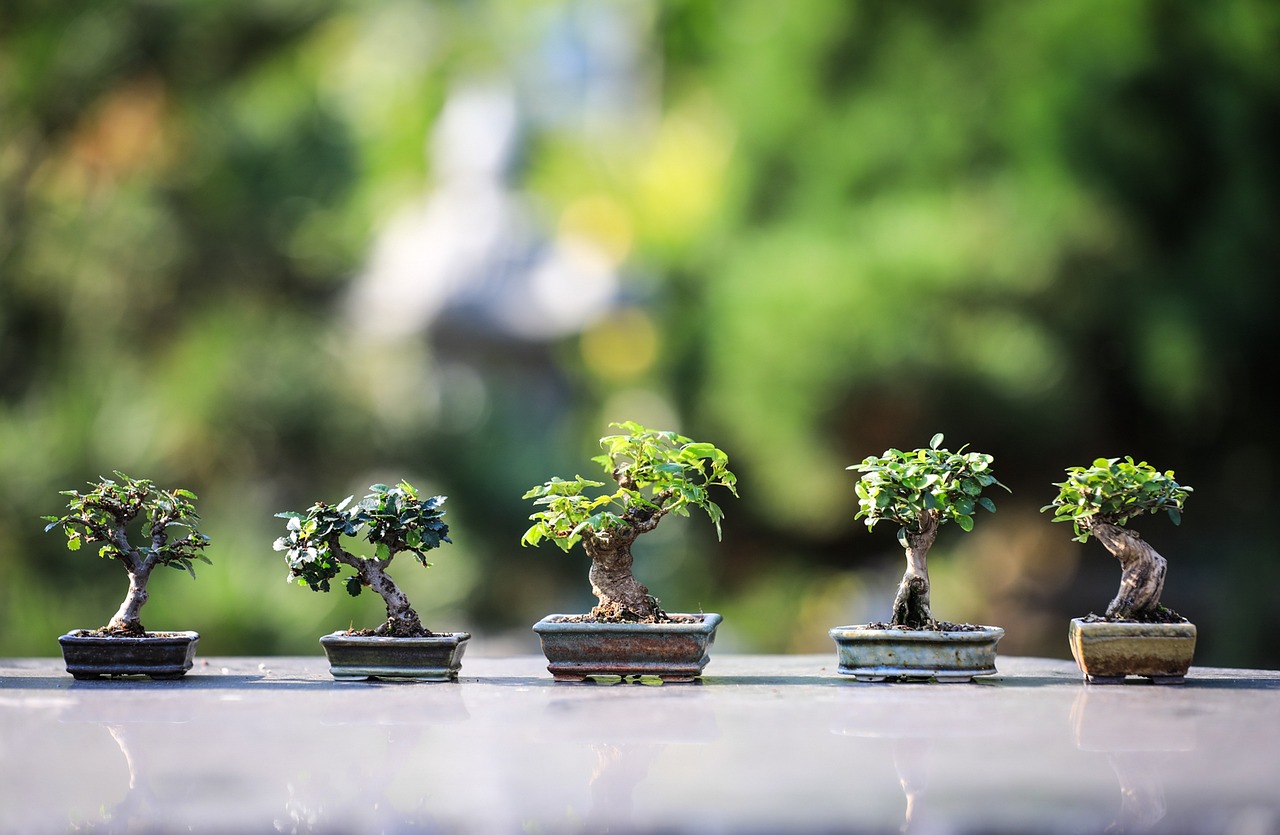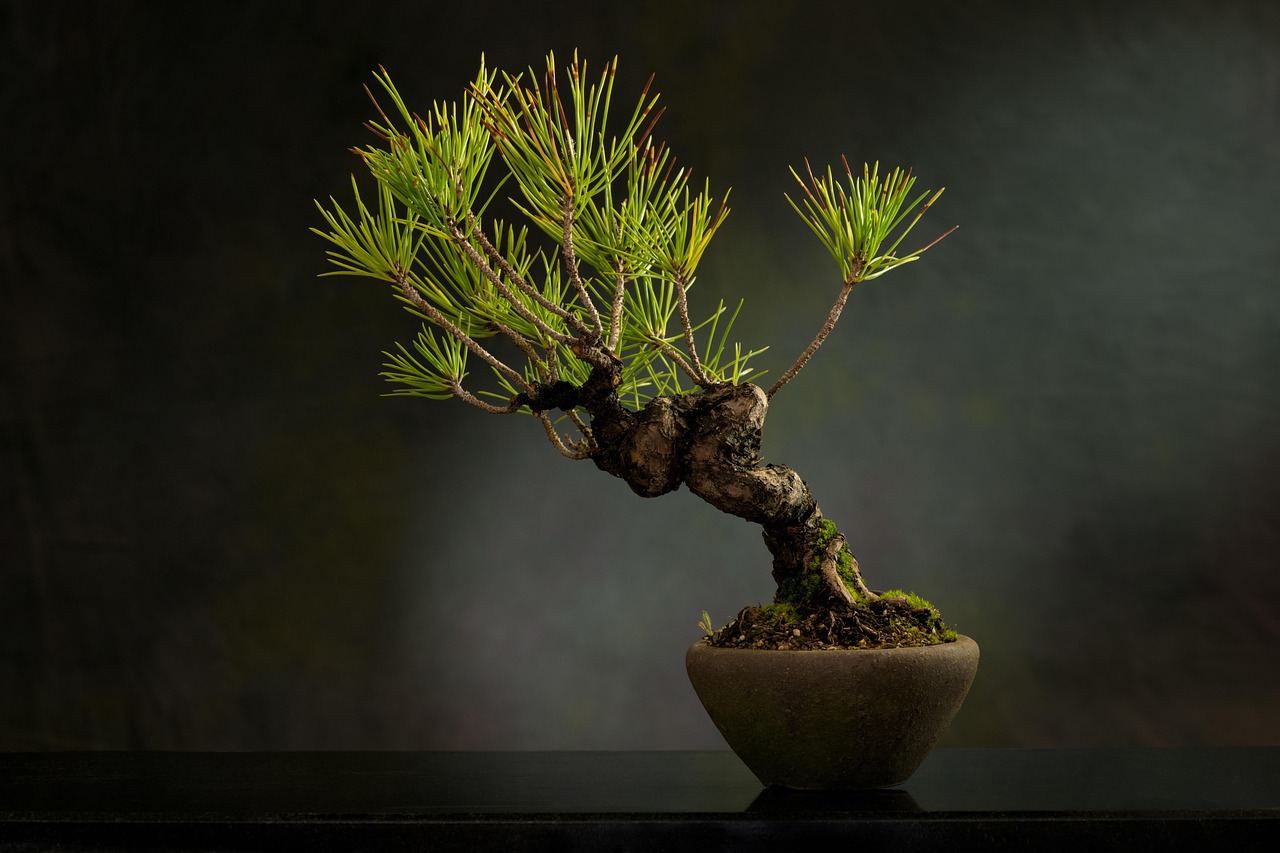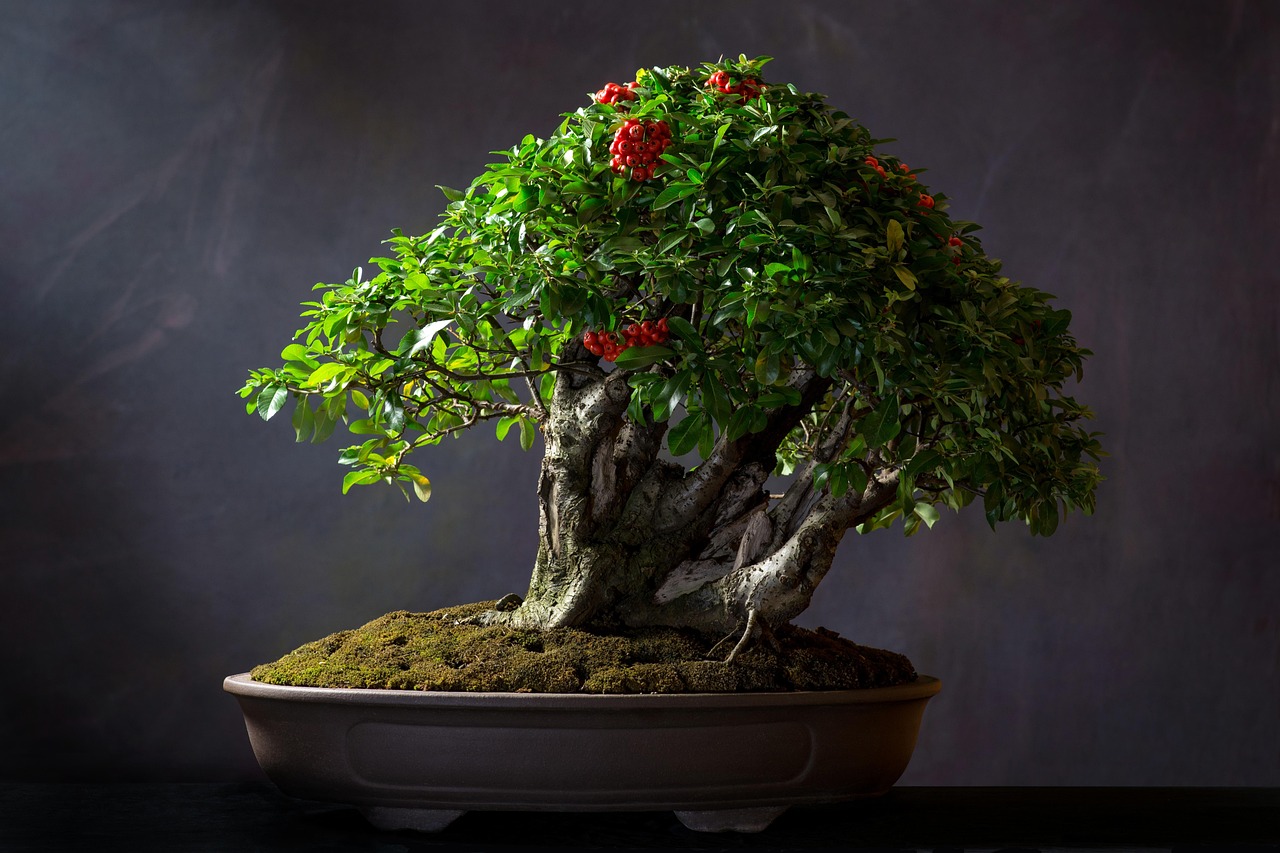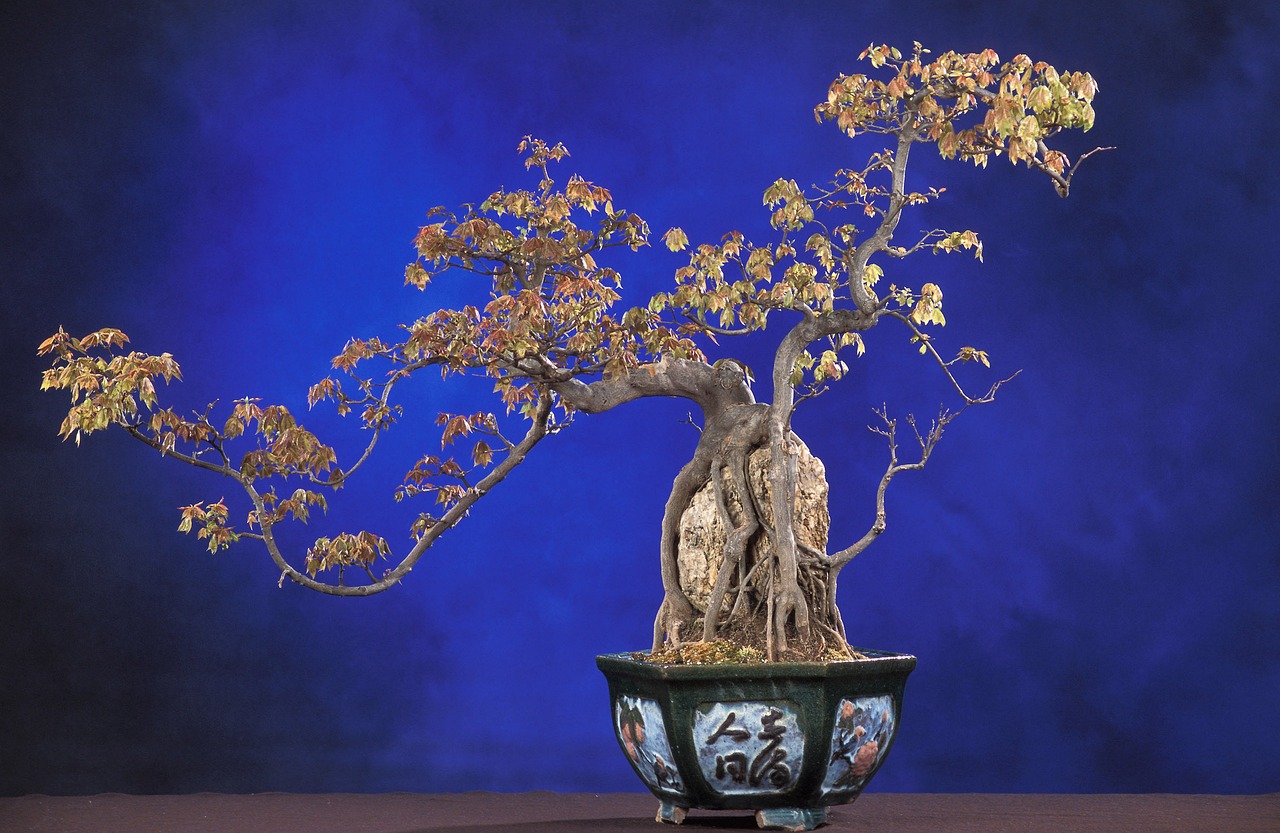Bonsai trees exhibit a slow to moderate growth rate, influenced by species, environmental conditions, and care practices. Generally, bonsai can grow anywhere from a few inches to several feet in a few years, depending on the care and the type of tree. Proper techniques can encourage healthy growth.
Understanding Bonsai Tree Growth
Bonsai trees are not a specific species but rather a technique used to cultivate trees in miniature form. This practice has roots in ancient Chinese and Japanese gardening traditions. The growth rate of bonsai trees can vary significantly based on several factors. These include the species of the tree, the growing medium, environmental conditions, and the care it receives.

Typically, bonsai trees are categorized into various species such as Junipers, Maples, Ficus, and Elms. Each species has its unique growth patterns and requirements. Understanding these differences is essential for bonsai enthusiasts aiming to achieve the best results.
Factors Influencing Growth Rate
The growth rate of bonsai trees is influenced by numerous factors. Here are some key elements that play a significant role:
- Species: Different tree species have varying growth rates. For example, fast-growing species like Ficus may thrive quicker than slower-growing ones such as pines.
- Soil Quality: The type of soil used can impact water retention and nutrient availability, both crucial for growth.
- Watering Practices: Proper watering is vital. Overwatering or underwatering can hinder growth and lead to health issues.
- Light Conditions: Adequate sunlight is necessary for photosynthesis. Insufficient light can stunt growth.
- Temperature: Most bonsai prefer temperatures between 60°F and 75°F. Extreme temperatures can affect their health and growth rate.
- Fertilization: Regular feeding during the growing season is essential for providing necessary nutrients.
Bonsai Growth Timeline
The timeline for bonsai tree growth can vary widely. Generally, growers can expect the following milestones:

| Age of Bonsai | Typical Growth Rate | Key Care Tips |
|---|---|---|
| 1 Year | 1 to 6 inches | Focus on establishing roots; use well-draining soil. |
| 2 to 3 Years | 6 to 12 inches | Regular pruning and wiring; ensure adequate sunlight. |
| 4 to 5 Years | 12 to 24 inches | Apply fertilizer; monitor for pests and diseases. |
| 5+ Years | Variable (depends on species) | Continue shaping; consider repotting every 2 years. |
The above table provides an overview of what to expect as your bonsai matures. The initial years are critical for establishing a strong foundation. During this time, focus on developing the root system and ensuring proper care.
Miniature Care Techniques
Caring for bonsai requires dedication and specific techniques. Here are some essential care methods that influence growth:
- Pruning: Regular pruning helps shape the tree and control its size. Proper techniques can promote healthier branching.
- Wiring: Wiring branches allows you to direct their growth. It’s crucial to monitor wires to prevent them from cutting into the bark.
- Repotting: Repotting every couple of years refreshes the soil and prevents root binding, essential for healthy growth.
- Pest Control: Regularly check for pests and diseases. Early detection can prevent significant damage.
The combination of these techniques plays a fundamental role in promoting healthy growth and maintaining the aesthetic appeal of your bonsai tree. Each technique should be tailored to the specific needs of the species you are cultivating.

Watering Practices for Bonsai Trees
Watering is one of the most critical aspects of bonsai care. Proper watering techniques directly affect the growth, health, and vitality of the tree. Since bonsai trees are often planted in small containers, their soil can dry out quickly. Therefore, understanding the watering needs of your bonsai is essential.
Determining Water Needs
The water requirements of bonsai trees can vary based on several factors, including the species, size of the pot, and environmental conditions. Here are some tips to help you determine when to water:
- Soil Moisture: Check the top layer of soil. If it feels dry to the touch, it is time to water.
- Weight of the Pot: A pot that feels light may indicate that the soil is dry. Conversely, a heavy pot likely has sufficient moisture.
- Time of Year: During the growing season, bonsai trees generally need more water. In contrast, during dormancy in winter, their requirements decrease.
Watering Techniques
Effective watering techniques can enhance your bonsai’s growth and health. Here are some recommended practices:
- Deep Watering: Water the tree thoroughly until water drains from the bottom of the pot. This ensures that all roots receive moisture.
- Consistent Schedule: Establish a regular watering schedule. However, always adjust based on the tree’s specific needs and environmental conditions.
- Avoid Overwatering: Ensure that the bonsai pot has drainage holes to prevent water logging. Overwatering can lead to root rot.
Fertilization for Healthy Growth
Fertilizing your bonsai tree is essential for providing necessary nutrients that support growth and development. Bonsai trees require nutrients like nitrogen, phosphorus, and potassium for healthy foliage and root systems.

Types of Fertilizers
There are two main types of fertilizers you can use for bonsai trees: organic and synthetic.
- Organic Fertilizers: These include compost, fish emulsion, and seaweed extract. They release nutrients slowly and improve soil structure.
- Synthetic Fertilizers: These provide immediate nutrients but can lead to salt buildup in the soil if not used carefully.
Fertilization Schedule
A general fertilization guideline is as follows:
- Spring: Begin fertilizing as growth resumes. Use a balanced fertilizer every 4-6 weeks during this time.
- Summer: Continue with regular feeding. Adjust based on growth; fast-growing species may need more frequent applications.
- Fall: Gradually reduce feeding as growth slows down. Stop fertilizing in late fall before dormancy.
- Winter: Most bonsai trees do not require fertilizer during this dormant period.
Light Requirements for Bonsai Trees
Light is a crucial factor in the growth of bonsai trees. Adequate light ensures that the tree can photosynthesize effectively, which is vital for its overall health.
Types of Light
Bonsai trees can thrive under different lighting conditions, depending on the species. Here are some common light sources:
- Natural Sunlight: Many bonsai species prefer direct sunlight for several hours each day. Placing them near a south-facing window often provides optimal light.
- Artificial Light: For indoor bonsai, consider using grow lights. These lights can supplement natural light, especially during winter months.
Signs of Insufficient Light
If your bonsai tree does not receive enough light, it may exhibit several signs:
- Leggy Growth: The tree may grow tall with long stems and sparse leaves as it stretches toward light.
- Pale Leaves: Leaves may lose their vibrant color and become yellow or pale.
- Leaf Drop: Insufficient light can cause leaves to drop prematurely.
Caring for your bonsai tree involves understanding its specific needs regarding watering, fertilization, and lighting. Each aspect contributes to a healthy growth rate and the overall well-being of your miniature tree.
Pest Management for Bonsai Trees
Maintaining the health of your bonsai tree extends beyond watering, fertilization, and light. Pests and diseases can pose a significant threat to these miniature trees. Understanding how to identify and manage common pests is crucial for their well-being.
Common Pests
Bonsai trees can attract various pests. Here are some of the most common ones:
- Aphids: Small, soft-bodied insects that feed on sap. They can cause leaf curling and yellowing.
- Spider Mites: Tiny arachnids that thrive in dry conditions. Infestations can lead to fine webbing and stippled leaves.
- Mealybugs: White, cottony pests that also suck sap. They can weaken the plant and promote fungal growth.
- Scale Insects: These pests appear as small bumps on stems and leaves. They can be hard to spot but can cause significant damage.
Signs of Infestation
It is essential to regularly check your bonsai for signs of pest infestations. Here are some indicators:
- Discolored Leaves: Yellowing or browning leaves may indicate pest activity.
- Visible Pests: Look for tiny insects on the foliage or bark.
- Sticky Residue: A sticky substance known as honeydew may indicate aphids or mealybugs.
- Webbing: Fine webs on the tree suggest spider mites.
Pest Control Methods
There are several effective methods for controlling pests in bonsai trees:
- Insecticidal Soap: A safe option for treating soft-bodied insects like aphids and mealybugs. It disrupts their cell membranes.
- Neem Oil: This natural pesticide can deter a range of pests. It works by disrupting their feeding and breeding cycles.
- Horticultural Oil: Effective in smothering insects and preventing infestations.
- Manual Removal: For small infestations, gently wipe or wash off pests with a soft cloth or spray of water.
Disease Management in Bonsai Trees
Bonsai trees are also susceptible to various diseases, often linked to poor care or environmental stressors. Being aware of these diseases is vital for prompt treatment.
Common Diseases
Several diseases can affect bonsai trees, including:
- Root Rot: Often caused by overwatering or poor drainage, leading to mushy roots and tree decline.
- Fungal Infections: Symptoms may include discolored leaves, spots, or wilting. Fungi thrive in humid conditions.
- Bacterial Blight: This disease can cause leaf spots and dieback. It often spreads rapidly in moist conditions.
Preventative Measures
Preventing diseases is often easier than treating them. Here are some practices to keep your bonsai healthy:
- Avoid Overwatering: Ensure proper drainage to prevent root rot.
- Adequate Airflow: Space trees appropriately to allow airflow, reducing humidity levels around the leaves.
- Cull Infected Parts: Remove any diseased leaves or branches promptly to prevent further spread.
- Use Sterilized Tools: Always use clean, sterilized tools when pruning to minimize the risk of introducing pathogens.
Seasonal Care Considerations
The care requirements for bonsai trees can change with the seasons. Each season presents unique challenges and opportunities for growth.
Spring Care
Spring marks the beginning of the growing season. Here are some care tips for this time:
- Repotting: Consider repotting your bonsai to refresh soil and stimulate growth.
- Fertilizing: Begin fertilizing as new growth emerges to provide essential nutrients.
- Pest Monitoring: Regularly check for pests as warmer weather encourages their activity.
Summer Care
Summer is typically a period of vigorous growth. Key considerations include:
- Increased Watering: Monitor soil moisture closely, as hot weather can dry out pots quickly.
- Pest Control: Continue monitoring for pests, as they may thrive in warm conditions.
- Pruning: Regularly prune new growth to maintain shape and encourage bushiness.
Fall Care
As temperatures drop, bonsai trees begin preparing for dormancy. Care tips include:
- Reduce Fertilization: Gradually decrease fertilization as growth slows down.
- Pest Surveillance: Keep checking for pests, as some may become more active before winter.
- Prepare for Winter: If necessary, move indoor bonsai to a stable environment away from drafts.
Winter Care
Winter is a critical time for many bonsai species. Important care measures include:
- Minimize Watering: Reduce watering frequency since many trees enter dormancy and require less moisture.
- Avoid Frost Damage: Protect outdoor bonsai from frost by bringing them indoors or using protective coverings.
- No Fertilization: Do not fertilize during the dormant period.
The seasonal care of your bonsai tree involves adjusting practices based on changing environmental conditions. By implementing appropriate measures throughout the year, you can promote healthy growth and longevity in your miniature tree.
Additional Considerations for Bonsai Care
Beyond the basic care techniques discussed, there are several additional considerations that bonsai enthusiasts should keep in mind. These factors can enhance the aesthetics and health of your bonsai tree.
Choosing the Right Pot
The pot you select for your bonsai is crucial for both aesthetics and health. Here are some points to consider:
- Drainage: Ensure the pot has adequate drainage holes to prevent waterlogging.
- Size: The pot should be proportionate to the size of the tree. A pot that is too small can restrict root growth, while one that is too large can lead to excess moisture retention.
- Material: Clay pots are popular as they allow moisture to evaporate, but plastic pots are lightweight and easier to handle.
Styling and Shaping Techniques
Shaping your bonsai tree not only enhances its visual appeal but also contributes to its growth patterns. Here are some common techniques:
- Pruning: Regular pruning helps maintain the desired shape and encourages bushier growth.
- Wiring: Wiring branches allows you to direct their growth. Be careful not to damage the bark.
- Trimming Roots: Root trimming during repotting helps keep the tree healthy and encourages new growth.
Creating a Bonsai Display
A well-designed display can enhance the beauty of your bonsai. Here are some tips for creating an attractive presentation:
- Use a Suitable Stand: Elevate your bonsai on a stand that complements its size and style.
- Add Complementary Elements: Consider including rocks, moss, or other plants to create a mini landscape.
- Lighting: Proper lighting can highlight the features of your bonsai. Natural light or strategically placed lamps can enhance visibility.
Final Thoughts
Caring for a bonsai tree requires patience, dedication, and knowledge. Understanding the factors that influence growth rates, along with proper care techniques, can lead to a healthy and thriving miniature tree. Regular attention to watering, fertilization, light exposure, pest control, and seasonal care will ensure your bonsai remains vibrant.
Additionally, selecting the right pot and employing styling techniques will enhance both the health and appearance of your bonsai. As you continue to nurture your tree, take time to enjoy the process of growth. Each bonsai is unique, reflecting not only the species but also your personal touch as a caregiver.
Whether you are a novice or an experienced bonsai enthusiast, there is always something new to learn about this art form. By engaging in continual learning and observation, you can cultivate not just a tree but a rewarding hobby that brings peace and beauty into your life.
Your journey with bonsai trees will be filled with challenges and triumphs. Embrace each moment as an opportunity for growth, both for your tree and yourself. Happy bonsai gardening!
